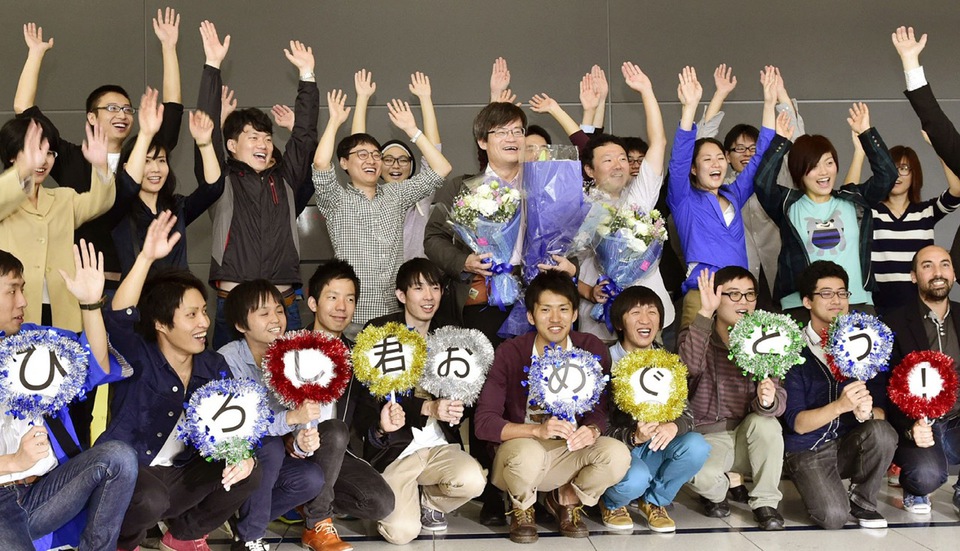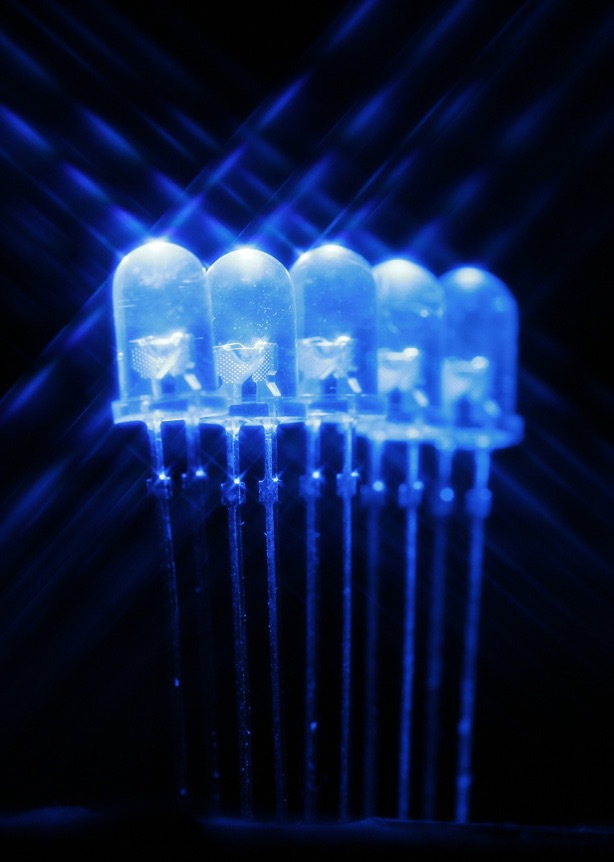Dr. Hiroshi Amano learned the wonderful news that he had won the Nobel Prize while he was overseas on business; when he returned to Japan, he was surrounded by his students, who gave him a surprise celebration. This scene was widely broadcasted on television, and images of Dr. Amano sharing with his students the joy of receiving the prize conveyed his unassuming character.
On October 7, the Royal Swedish Academy of Sciences announced that the 2014 Nobel Prize in Physics would be awarded to Dr. Isamu Akasaki of Meijo University, Dr. Hiroshi Amano of the Nagoya University Graduate School of Engineering, and Dr. Shuji Nakamura of the University of California, Santa Barbara, for the invention of blue light-emitting diodes (LEDs).
In combination with existing red and green LEDs, blue LEDs made possible the creation of pure white light. Global manufacturers dreamed of being able to utilize the blue LEDs required for this combination of colors, and the realization of this dream dramatically increased the application of LEDs in industrial products. Blue LEDs are now found in everything from televisions and smartphones to lighting and traffic signals, and have become an integral part of everyday life.
Gallium nitride, essential to the creation of blue LEDs and said to be more difficult to crystallize than diamonds, was a key factor in their winning Nobel Prize. Dr. Akasaki and Dr. Amano, the teacher and his disciple, threw themselves into this research, succeeding in developing a technique for producing large crystals. It took a further four years before they managed to create the world’s first p-type crystals, needed for blue LEDs. “It was something nobody around the world had been able to do,” Dr. Amano says, recalling the excitement of the time.
When Dr. Amano, who achieved this great feat, was asked what is important to do when engaged in research, he replied, “Always have an image of success while conducting your research. Otherwise, you will fail. When I started researching blue LEDs in my senior year at university, thirty years ago now, I had a clear vision that ‘if this becomes a reality, it will be a game changer in the display industry.’” This positive mind-set must have kept him going when the research was difficult.
Based on his personal experience, he would like students to have their own images of success. For that reason, he tries to maintain an attitude toward students that is more like that between equals than the typical relationship between teacher and student. However, now that he has won the Nobel Prize, his laboratory will come under increasing scrutiny. “It will put pressure on the students in the lab!” Dr. Amano smiles, but his close support of students as they aim for their targets will not change.
We asked Dr. Amano about the future of LEDs. “There are still many things to do. LEDs are still expensive for people around the world to use. Our goal is to reduce their price to one-fifth of the current price by 2020. If we succeed, they will spread even more rapidly around the world. There are also many places in the world without a satisfactory supply of electricity. By providing cost- and energy-efficient technology, we can bring more light to the world,” he says as his eyes sparkled.
Asked about his future as a researcher, he responds, “I have many other visions for changing the world. As I firmly believe I can achieve them, I’d love to check them all off my list before I reach retirement age. And I still have 11 years until then!” Dr. Amano’s “image of success” always extends many years ahead.

Hiroshi Amano
Professor at the Nagoya University Graduate School of Engineering, specializing in electrical engineering and computer science. Worked as an assistant at Nagoya University after receiving his doctorate. He has also worked as a professor at the Meijo University Faculty of Science and Technology. His previous awards include the Japanese Journal of Applied Physics Award for best review paper and the Rank Prize for Optoelectronics.
Dr. Amano shares in the joy of his students, who greeted him after his return to Japan from a business trip with the message: Congratulations Hiroshi! (©Kyodo News).


































































































































